Impacts of COVID-19 on the Education, Life and Mental Health of Students in Bangladesh
Abstract
:1. Introduction
- (i)
- We have analyzed five important aspects of students’ lives, which are their education, social life, daily life, plans for the future, and mental health.
- (ii)
- We have analyzed the mental health of students and found that more than 70% of participants are going through mild to severe depression and anxiety.
- (iii)
- We have assessed the individual correlation among students’ mental health and their education, social life, daily life, and plans for the future.
- (iv)
- We have identified how the mental health of students, their study hours, internet usage, sleep hours, personal care time, and changes in their plans are directly affecting each other during this crucial period.
- (v)
- We have also discovered the reasons behind the changing patterns in students’ study hours, social media usage, and sleep hours and discovered their best and worst experiences during COVID-19.
2. Related Work
3. Methodology
3.1. Data Collection Procedure
3.2. Measures
3.3. Data Analysis
4. Results
4.1. Impact of COVID-19 on Studies
4.2. Impact of COVID-19 on Social Life
4.3. Impact of COVID-19 on Daily Life
4.4. Impact of COVID-19 on Plans for the Future
4.5. Impact of COVID-19 on Mental Health
4.6. Dependency Measurement with Mental Health
4.7. Dependency Measurement for Categorical Variables
4.8. Open-Ended Question Analysis
5. Discussion
Author Contributions
Funding
Institutional Review Board Statement
Informed Consent Statement
Data Availability Statement
Conflicts of Interest
References
- Liu, Y.C.; Kuo, R.L.; Shih, S.R. COVID-19: The first documented coronavirus pandemic in history. Biomed. J. 2020, 43, 328–333. [Google Scholar] [CrossRef] [PubMed]
- WHO. Coronavirus Disease (COVID-19) Update. 2021. Available online: https://www.who.int/bangladesh/emergencies/coronavirus-disease- (accessed on 28 May 2021).
- Worldometers. COVID Live Update: 169,740,962 Cases and 3,527,396 Deaths from the Coronavirus—Worldometer. 2021. Available online: https://www.worldometers.info/coronavirus/ (accessed on 28 May 2021).
- Reuters. Bangladesh Confirms Its First Three Cases of Coronavirus|Reuters. 2021. Available online: https://www.reuters.com/article/us-health-coronavirus-bangladesh-idUSKBN20V0FS (accessed on 28 May 2021).
- IEDCR. 2020. Available online: https://iedcr.gov.bd/ (accessed on 27 September 2020).
- Dhaka Tribune. COVID-19 Cases in Bangladesh since April 1|Dhaka Tribune. 2020. Available online: https://www.dhakatribune.com/health/coronavirus/2020/04/14/20-fold-rise-of-covid-19-cases-in-bangladesh-since-april-1 (accessed on 28 May 2021).
- UNESCO. 1.3 Billion Learners are Still Affected by School or University Closures, as Educational Institutions Start Reopening Around the World, Says UNESCO. 2020. Available online: https://en.unesco.org/news/13-billion-learners-are-still-affected-school-university- closures- educational-institutions (accessed on 14 May 2021).
- Dhaka Tribune. Coronavirus: Bangladesh Declares Public Holiday from March 26 to April 4|Dhaka Tribune. 2020. Available online: https://www.dhakatribune.com/bangladesh/2020/03/23/govt-offices-to-remain-closed-till-april-4 (accessed on 28 May 2021).
- Dhaka Tribune. Bangladesh to Go Into Week-Long Hard Lockdown from April 14|Dhaka Tribune. 2021. Available online: https://www.dhakatribune.com/health/coronavirus/2021/04/09/government-considering-week-long-full-lockdown-from-april-14 (accessed on 28 May 2021).
- The Daily Star. We Will Open Schools, Colleges and Universities after Eid: PM|The Daily Star. 2021. Available online: https://www.thedailystar.net/bangladesh/news/we-will-open-schools-colleges-and-universities-after-eid-pm-2068193 (accessed on 28 May 2021).
- Dutta, S.; Smita, M.K. The Impact of COVID-19 Pandemic on Tertiary Education in Bangladesh: Students’ Perspectives. Open J. Soc. Sci. 2020, 8, 53–68. [Google Scholar] [CrossRef]
- Baloran, E.T. Knowledge, Attitudes, Anxiety, and Coping Strategies of Students during COVID-19 Pandemic. J. Loss Trauma 2020, 25, 635–642. [Google Scholar] [CrossRef]
- Majumdar, P.; Biswas, A.; Sahu, S. COVID-19 pandemic and lockdown: Cause of sleep disruption, depression, somatic pain, and increased screen exposure of office workers and students of India. Chronobiol. Int. 2020, 37, 1191–1200. [Google Scholar] [CrossRef]
- Gao, J.; Zheng, P.; Jia, Y.; Chen, H.; Mao, Y.; Chen, S.; Wang, Y.; Fu, H.; Dai, J. Mental health problems and social media exposure during COVID-19 outbreak. PLoS ONE 2020, 15, e0231924. [Google Scholar] [CrossRef]
- Xiong, J.; Lipsitz, O.; Nasri, F.; Lui, L.M.; Gill, H.; Phan, L.; Chen-Li, D.; Iacobucci, M.; Ho, R.; Majeed, A.; et al. Impact of COVID-19 pandemic on mental health in the general population: A systematic review. J. Affect. Disord. 2020. [Google Scholar] [CrossRef] [PubMed]
- Sanchez-Gomez, M.; Giorgi, G.; Finstad, G.L.; Urbini, F.; Foti, G.; Mucci, N.; Zaffina, S.; León-Perez, J.M. COVID-19 Pandemic as a Traumatic Event and Its Associations with Fear and Mental Health: A Cognitive-Activation Approach. Int. J. Environ. Res. Public Health 2021, 18, 7422. [Google Scholar] [CrossRef]
- Husky, M.M.; Kovess-Masfety, V.; Swendsen, J.D. Stress and anxiety among university students in France during COVID-19 mandatory confinement. Compr. Psychiatry 2020, 102, 152191. [Google Scholar] [CrossRef]
- Patsali, M.E.; Mousa, D.P.V.; Papadopoulou, E.V.; Papadopoulou, K.K.; Kaparounaki, C.K.; Diakogiannis, I.; Fountoulakis, K.N. University students’ changes in mental health status and determinants of behavior during the COVID-19 lockdown in Greece. Psychiatry Res. 2020, 292, 113298. [Google Scholar] [CrossRef]
- Khan, A.H.; Sultana, M.S.; Hossain, S.; Hasan, M.T.; Ahmed, H.U.; Sikder, M.T. The impact of COVID-19 pandemic on mental health & wellbeing among home-quarantined Bangladeshi students: A cross-sectional pilot study. J. Affect. Disord. 2020, 277, 121–128. [Google Scholar] [CrossRef]
- Faisal, R.A.; Jobe, M.C.; Ahmed, O.; Sharker, T. Mental health status, anxiety, and depression levels of Bangladeshi university students during the COVID-19 pandemic. Int. J. Ment. Health Addict. 2021, 1–16. [Google Scholar] [CrossRef]
- Al Mamun, F.; Hosen, I.; Misti, J.M.; Kaggwa, M.M.; Mamun, M.A. Mental disorders of Bangladeshi students during the COVID-19 pandemic: A systematic review. Psychol. Res. Behav. Manag. 2021, 14, 645. [Google Scholar] [CrossRef]
- Kapasia, N.; Paul, P.; Roy, A.; Saha, J.; Zaveri, A.; Mallick, R.; Barman, B.; Das, P.; Chouhan, P. Impact of lockdown on learning status of undergraduate and postgraduate students during COVID-19 pandemic in West Bengal, India. Child. Youth Serv. Rev. 2020, 116, 105–194. [Google Scholar] [CrossRef] [PubMed]
- Adnan, M. Online learning amid the COVID-19 pandemic: Students perspectives. J. Pedagog. Res. 2020, 1, 45–51. [Google Scholar] [CrossRef]
- Tran, T.; Hoang, A.D.; Nguyen, Y.C.; Nguyen, L.C.; Ta, N.T. Toward Sustainable Learning during School Suspension: Socioeconomic, Occupational Aspirations, and Learning Behavior of Vietnamese Students during COVID-19. Sustainability 2020, 12, 4195. [Google Scholar] [CrossRef]
- Wang, C.; Zhao, H. The Impact of COVID-19 on Anxiety in Chinese University Students. Front. Psychol. 2020, 11, 1168. [Google Scholar] [CrossRef]
- Khan, I.A. Electronic Learning Management System: Relevance, Challenges and Preparedness. JETIR Res. J. 2020, 7, 471–480. [Google Scholar]
- Bostani, M.; Nadri, A.; Nasab, A.R. A Study of the Relation between Mental health and Academic Performance of Students of the Islamic Azad University Ahvaz Branch. Procedia - Soc. Behav. Sci. 2014, 116, 163–165. [Google Scholar] [CrossRef] [Green Version]
- Bendau, A.; Petzold, M.B.; Pyrkosch, L.; Mascarell Maricic, L.; Betzler, F.; Rogoll, J.; Große, J.; Ströhle, A.; Plag, J. Associations between COVID-19 related media consumption and symptoms of anxiety, depression and COVID-19 related fear in the general population in Germany. Eur. Arch. Psychiatry Clin. Neurosci. 2020, 1, 3. [Google Scholar] [CrossRef]
- Zhao, N.; Zhou, G. Social Media Use and Mental Health during the COVID-19 Pandemic: Moderator Role of Disaster Stressor and Mediator Role of Negative Affect. Appl. Psychol. Health-Well-Being 2020, 12, 1019–1038. [Google Scholar] [CrossRef] [PubMed]
- Aristovnik, A.; Keržič, D.; Ravšelj, D.; Tomaževič, N.; Umek, L. Impacts of the COVID-19 pandemic on life of higher education students: A global perspective. Sustainability 2020, 12, 8438. [Google Scholar] [CrossRef]
- Klaiber, P.; Wen, J.H.; DeLongis, A.; Sin, N.L. The Ups and Downs of Daily Life During COVID-19: Age Differences in Affect, Stress, and Positive Events. J. Gerontol. Ser. B 2020, 76, e30–e37. [Google Scholar] [CrossRef]
- Cao, W.; Fang, Z.; Hou, G.; Han, M.; Xu, X.; Dong, J.; Zheng, J. The psychological impact of the COVID-19 epidemic on college students in China. Psychiatry Res. 2020, 287, 112934. [Google Scholar] [CrossRef]
- Izaias, C.; Filho, S.; Conte De Las, W.; Rodrigues, V.; De Castro, R.B.; Aparecida Marçal, A.; Pavelqueires, S.; Takano, L.; Luis De Oliveira, W.; Neto, S. Impact of COVID-19 Pandemic On Mental Health of Medical Students: A Cross-Sectional Study Using GAD-7 And PHQ-9 Questionnaires. medRxiv 2020. [Google Scholar] [CrossRef]
- Brooks, S.K.; Webster, R.K.; Smith, L.E.; Woodland, L.; Wessely, S.; Greenberg, N.; Rubin, G.J. Rapid Review The psychological impact of quarantine and how to reduce it: Rapid review of the evidence. Lancet 2020, 395, 912–920. [Google Scholar] [CrossRef] [Green Version]
- Zhong, X.; Liu, X.; Liu, X.; Liu, J.; Zhong, X. Psychological state of college students during COVID-19 epidemic. SSRN Electron. J. 2020, 22. [Google Scholar]
- Islam, S.M.U.; Bodrud-Doza, M.; Khan, R.M.; Haque, M.A.; Mamun, M.A. Exploring COVID-19 stress and its factors in Bangladesh: A perception-based study. Heliyon 2020, 6, 1–10. [Google Scholar] [CrossRef]
- Ahmed, O.; Zahir Ahmed, M.; Md Abu Hena Mostafa Alim, S.; Arif Uddin Khan, M.D.; Jobe, M.C. COVID-19 outbreak in Bangladesh and associated psychological problems: An online survey. Death Stud. 2020. [Google Scholar] [CrossRef] [PubMed]
- Copeland, W.E.; McGinnis, E.; Bai, Y.; Adams, Z.; Nardone, H.; Devadanam, V.; Rettew, J.; Hudziak, J.J. Impact of COVID-19 Pandemic on College Student Mental Health and Wellness. J. Am. Acad. Child Adolesc. Psychiatry 2021, 60, 134–141.e2. [Google Scholar] [CrossRef]
- Zhai, Y.; Du, X. Mental health care for international Chinese students affected by the COVID-19 outbreak. Lancet Psychiatry 2020, 7, e22. [Google Scholar] [CrossRef]
- Kroenke, K.; Spitzer, R.L.; Williams, J.B. The PHQ-9: Validity of a brief depression severity measure. J. Gen. Intern. Med. 2001, 16, 606–613. [Google Scholar] [CrossRef]
- Spitzer, R.L.; Kroenke, K.; Williams, J.B.; Löwe, B. A brief measure for assessing generalized anxiety disorder: The GAD-7. Arch. Intern. Med. 2006, 166, 1092–1097. [Google Scholar] [CrossRef] [Green Version]
- Gupta, A.K.; Sahoo, S.; Mehra, A.; Grover, S. Psychological impact of ‘Lockdown’ due to COVID-19 pandemic in Nepal: An online survey. Asian J. Psychiatry 2020, 54, 102243. [Google Scholar] [CrossRef] [PubMed]
- Teymoori, A.; Real, R.; Gorbunova, A.; Haghish, E.F.; Andelic, N.; Wilson, L.; Asendorf, T.; Menon, D.; von Steinbüchel, N. Measurement invariance of assessments of depression (PHQ-9) and anxiety (GAD-7) across sex, strata and linguistic backgrounds in a European-wide sample of patients after Traumatic Brain Injury. J. Affect. Disord. 2020, 262, 278–285. [Google Scholar] [CrossRef] [PubMed]
- Garabiles, M.R.; Lao, C.K.; Yip, P.; Chan, E.W.; Mordeno, I.; Hall, B.J. Psychometric Validation of PHQ–9 and GAD–7 in Filipino Migrant Domestic Workers in Macao (SAR), China. J. Personal. Assess. 2019, 102, 833–844. [Google Scholar] [CrossRef]
- Quon, B.S.; Bentham, W.D.; Unutzer, J.; Chan, Y.F.; Goss, C.H.; Aitken, M.L. Prevalence of Symptoms of Depression and Anxiety in Adults With Cystic Fibrosis Based on the PHQ-9 and GAD-7 Screening Questionnaires. Psychosomatics 2015, 56, 345–353. [Google Scholar] [CrossRef]
- Investopedia. 2020. Available online: https://www.investopedia.com/terms/p/p-value.asp (accessed on 28 May 2021).
- McHugh, M.L. The Chi-square test of independence. Biochem. Medica 2012, 23, 143–149. [Google Scholar] [CrossRef] [Green Version]
- Matplotlib. 2021. Available online: https://matplotlib.org/ (accessed on 31 December 2021).
- WordClouds. 2021. Available online: https://www.wordclouds.com/ (accessed on 31 December 2021).
- Sahu, P. Closure of Universities Due to Coronavirus Disease 2019 (COVID-19): Impact on Education and Mental Health of Students and Academic Staff. Cureus 2020, 2019, 4–9. [Google Scholar] [CrossRef] [Green Version]
- Ali, W. Online and Remote Learning in Higher Education Institutes: A Necessity in light of COVID-19 Pandemic. High. Educ. Stud. 2020, 10, 16. [Google Scholar] [CrossRef]
- Innis, K.; Shaw, M. How do students spend their time? Qual. Assur. Educ. 1997, 5, 85–89. [Google Scholar] [CrossRef]
- Social Media Today. 2020. Available online: https://www.socialmediatoday.com/news/how-much-time-do-people-spend-on-social-media-in-2019-infographic/560270/ (accessed on 31 December 2021).
- BroadbandSearch. 2020. Available online: https://www.broadbandsearch.net/blog/average-daily-time-on-social-media (accessed on 21 December 2021).
- Chen, X.; Ran, L.; Liu, Q.; Hu, Q.; Du, X.; Tan, X. Hand hygiene, mask-wearing behaviors and its associated factors during the COVID-19 epidemic: A cross-sectional study among primary school students in Wuhan, China. Int. J. Environ. Res. Public Health 2020, 17, 2893. [Google Scholar] [CrossRef] [PubMed]
- Hirshkowitz, M.; Whiton, K.; Albert, S.M.; Alessi, C.; Bruni, O.; DonCarlos, L.; Hazen, N.; Herman, J.; Katz, E.S.; Kheirandish-Gozal, L.; et al. National sleep foundation’s sleep time duration recommendations: Methodology and results summary. Sleep Health 2015, 1, 40–43. [Google Scholar] [CrossRef]
- Shi, K.; Fan, H.; Jia, J.; Li, W.; Song, Z.; Gao, J.; Chen, X.; Lu, J.; Hu, W. The Risk Perceptions of SARS and Socio-Psychological Behaviors of Urban People in China. Acta Psychol. Sin. 2003, 35, 546–554. [Google Scholar]
- Peng, L.; Zhang, J.; Li, M.; Li, P.; Zhang, Y.; Zuo, X.; Miao, Y.; Xu, Y. Negative life events and mental health of Chinese medical students: The effect of resilience, personality and social support. Psychiatry Res. 2012, 196, 138–141. [Google Scholar] [CrossRef] [PubMed]
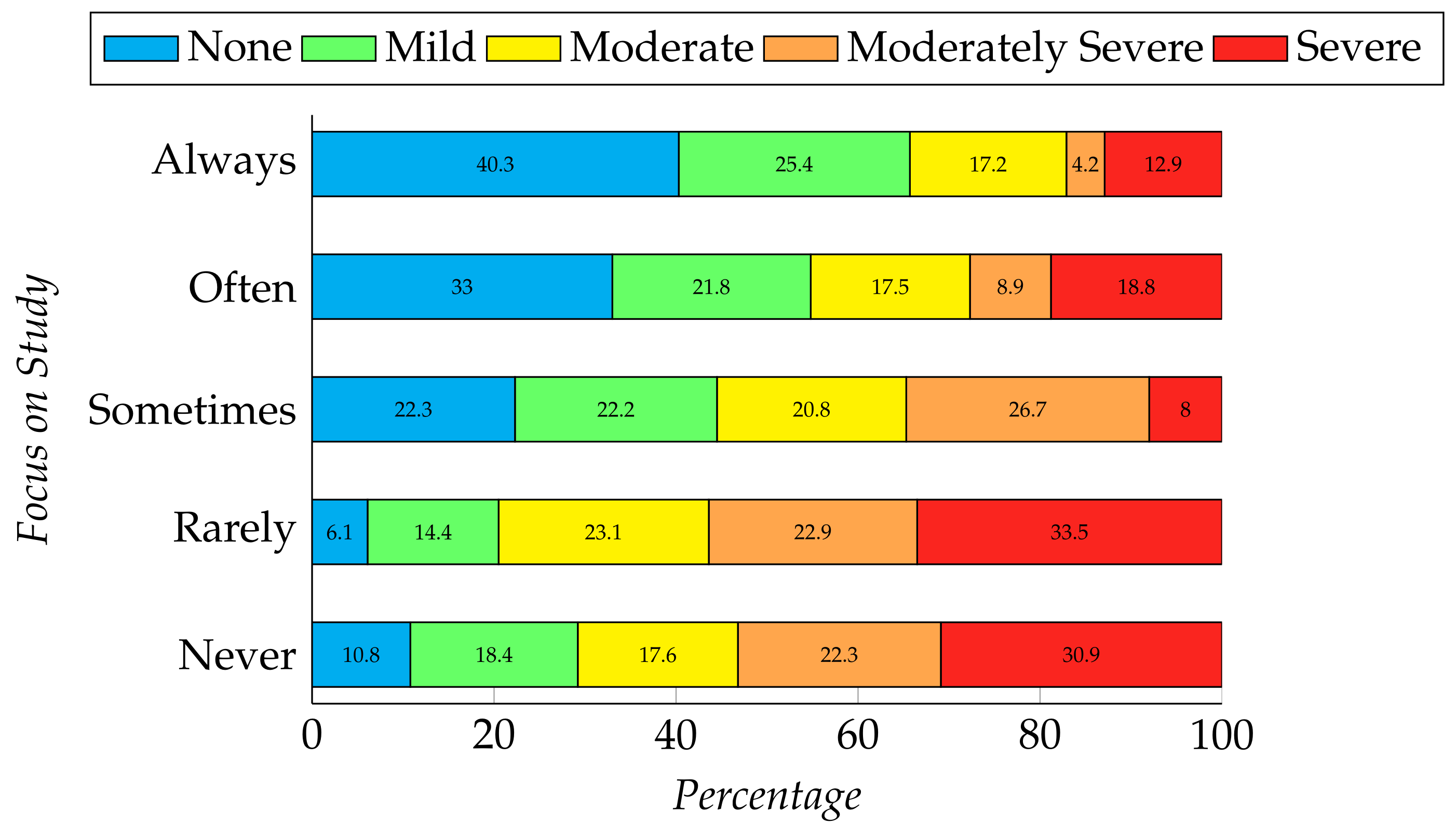
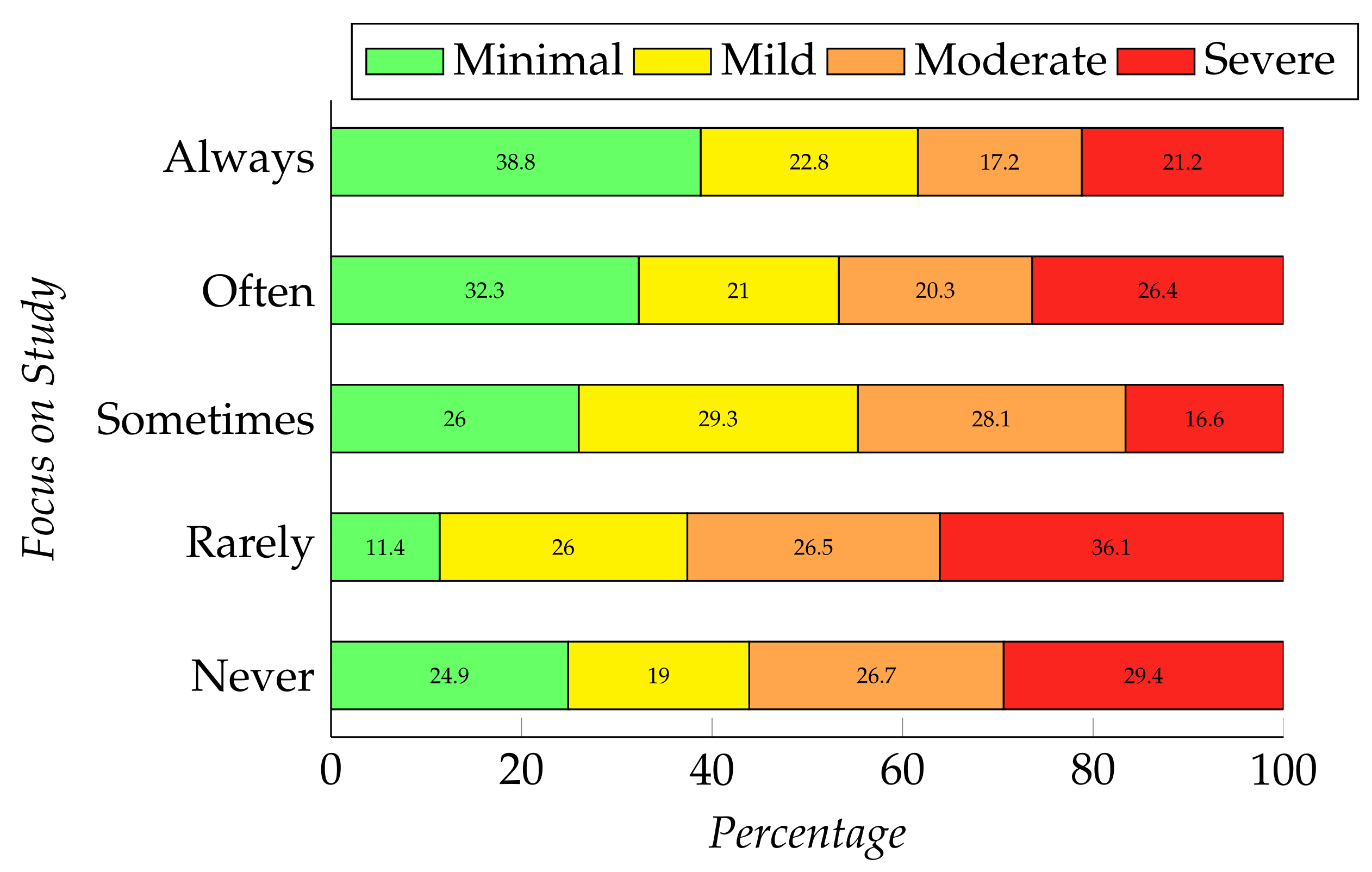
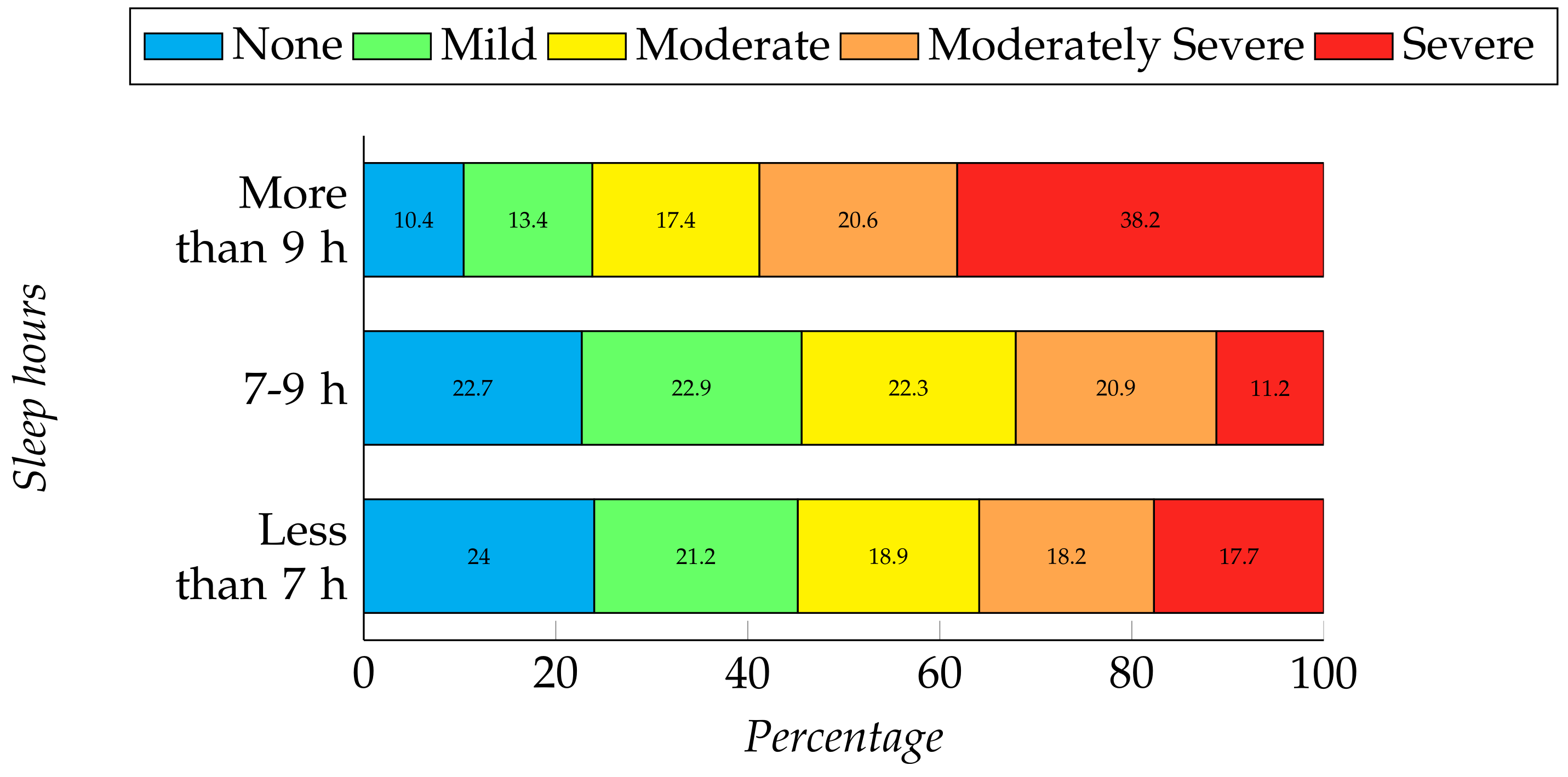
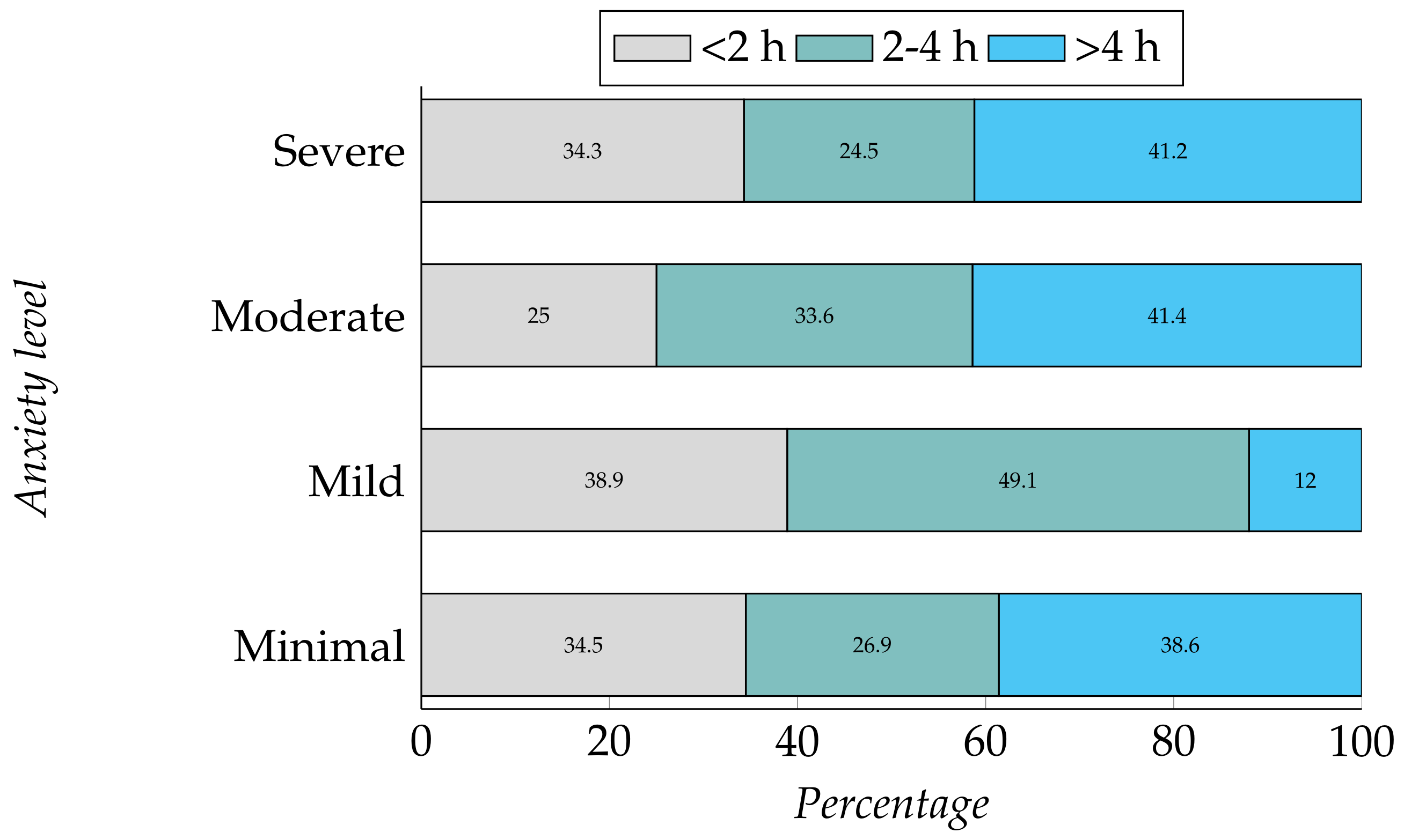
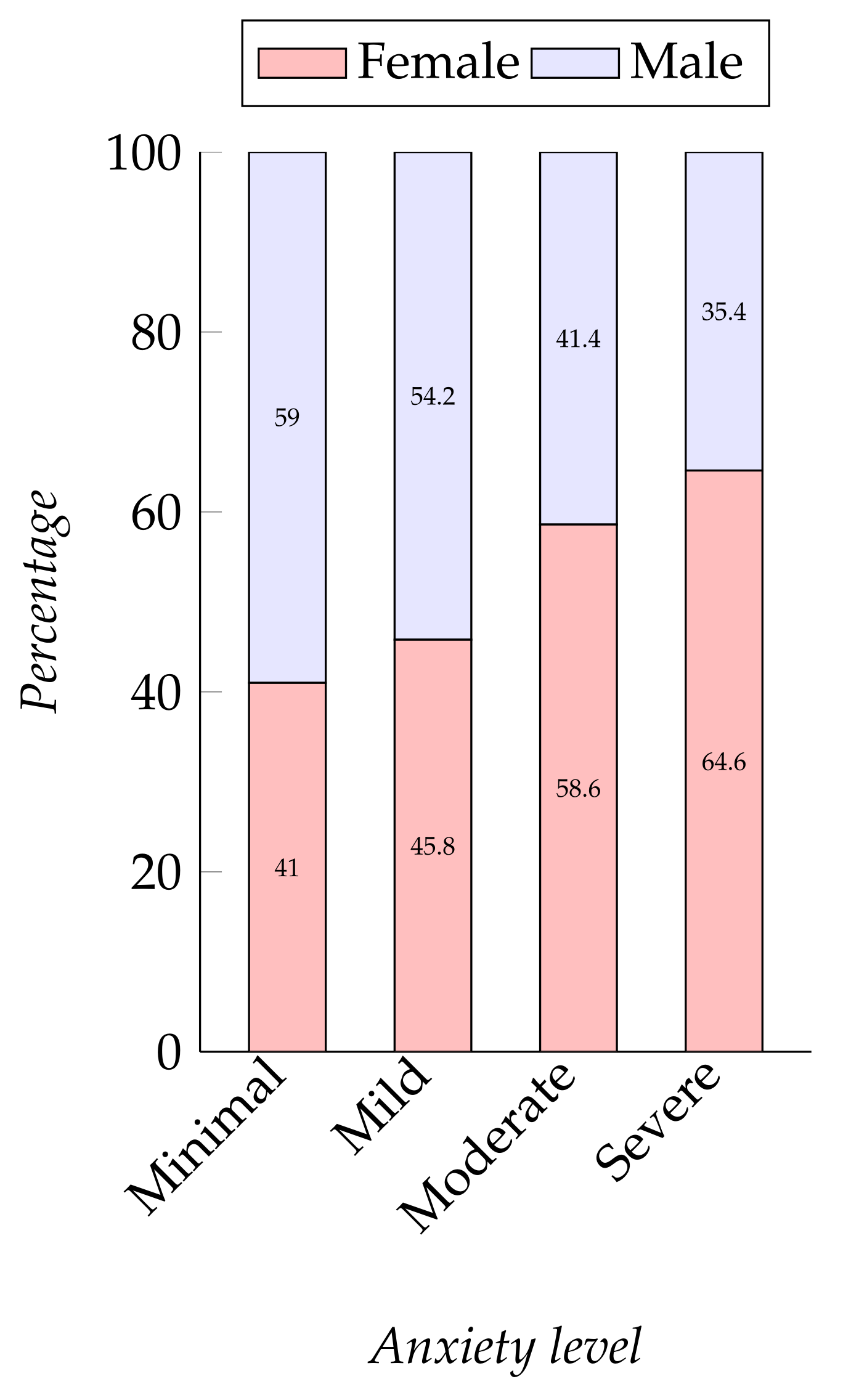

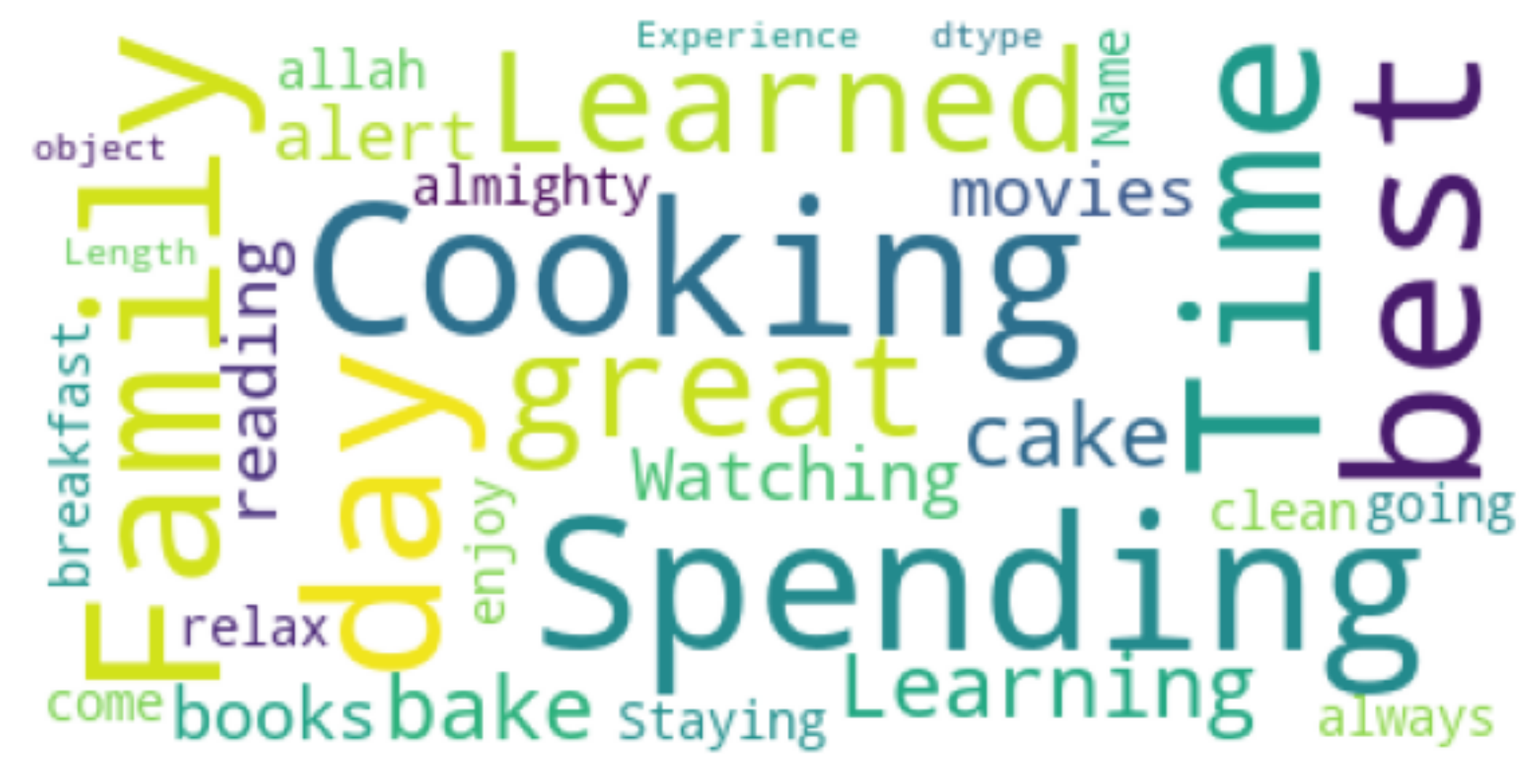
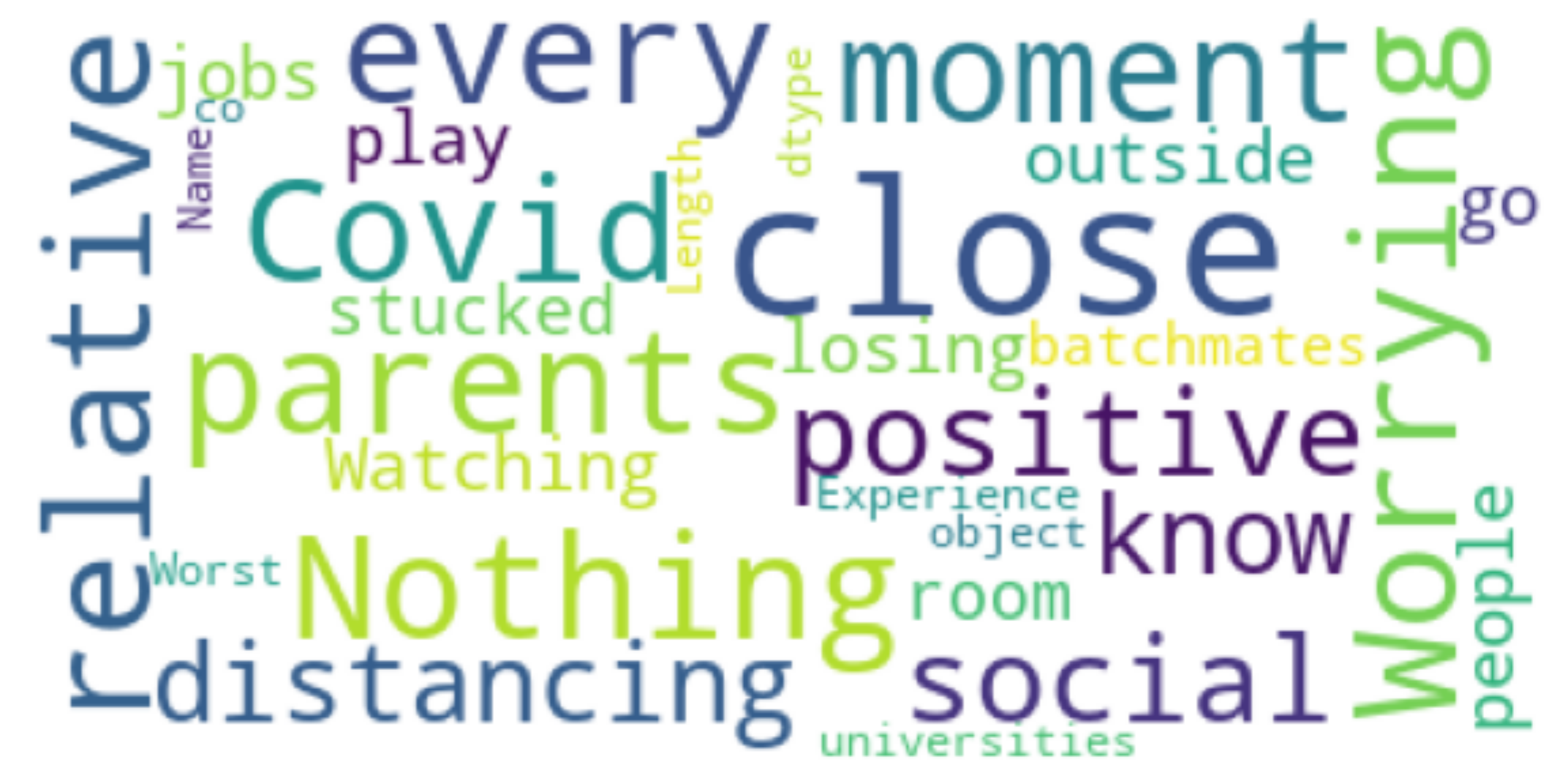
| Demographic Characteristics | N (%) |
|---|---|
| Division | |
| Barisal | 11 (2.7) |
| Chittagong | 131 (32) |
| Dhaka | 170 (41.6) |
| Khulna | 20 (4.9) |
| Mymensingh | 18 (4.4) |
| Rajshahi | 30 (7.3) |
| Rangpur | 24 (5.9) |
| Sylhet | 5 (1.2) |
| Gender | |
| Female | 151 (36.9) |
| Male | 258 (63.1) |
| Age (year) | |
| 18 to 24 | 294 (71.9) |
| 25 to 34 | 114 (27.8) |
| More than 34 | 1 (0.2) |
| Education Level | |
| Bachelor student | 389 (95.1) |
| Masters student | 10 (2.4) |
| Recently completed graduation | 10 (2.5) |
| Type of Educational Institution | |
| Public | 126 (30.8) |
| Private | 283 (69.2) |
| Subject/Discipline | |
| Engineering | 323 (79) |
| Medical | 26 (6.4) |
| Business Studies | 17 (4.2) |
| Arts | 11 (2.7) |
| Others | 32 (7.8) |
| Factors | Depression | Anxiety | ||
|---|---|---|---|---|
| p | p | |||
| Factors in Education section | ||||
| Online Class | 10.188 | 0.252 | 5.807 | 0.445 |
| Facilities for Online Class | 13.217 | 0.105 | 10.451 | 0.107 |
| Study hour during pandemic | 12.158 | 0.144 | 4.221 | 0.647 |
| Focus during pandemic | 50.477 ** | 0.000 | 26.426 * | 0.009 |
| Factors in Social Life section | ||||
| Time spent on social media | 24.316 * | 0.002 | 14.484 * | 0.025 |
| Time spent on online meetings | 34.802 | 0.336 | 15.876 | 0.893 |
| Time spent overall on internet | 22.126 * | 0.005 | 13.515 * | 0.036 |
| Factors in Daily Life section | ||||
| Sleep time | 20.564 * | 0.008 | 7.294 | 0.295 |
| Time spent with family | 12.905 | 0.115 | 10.546 | 0.103 |
| personal care time | 8.933 | 0.348 | 14.862 * | 0.021 |
| Family income Change | 7.906 | 0.443 | 4.049 | 0.670 |
| Factors in Future Plans section | ||||
| Change in future plans | 17.489 * | 0.002 | 19.966 ** | 0.000 |
Publisher’s Note: MDPI stays neutral with regard to jurisdictional claims in published maps and institutional affiliations. |
© 2022 by the authors. Licensee MDPI, Basel, Switzerland. This article is an open access article distributed under the terms and conditions of the Creative Commons Attribution (CC BY) license (https://creativecommons.org/licenses/by/4.0/).
Share and Cite
Piya, F.L.; Amin, S.; Das, A.; Kabir, M.A. Impacts of COVID-19 on the Education, Life and Mental Health of Students in Bangladesh. Int. J. Environ. Res. Public Health 2022, 19, 785. https://doi.org/10.3390/ijerph19020785
Piya FL, Amin S, Das A, Kabir MA. Impacts of COVID-19 on the Education, Life and Mental Health of Students in Bangladesh. International Journal of Environmental Research and Public Health. 2022; 19(2):785. https://doi.org/10.3390/ijerph19020785
Chicago/Turabian StylePiya, Fahmida Liza, Sumaiya Amin, Anik Das, and Muhammad Ashad Kabir. 2022. "Impacts of COVID-19 on the Education, Life and Mental Health of Students in Bangladesh" International Journal of Environmental Research and Public Health 19, no. 2: 785. https://doi.org/10.3390/ijerph19020785
APA StylePiya, F. L., Amin, S., Das, A., & Kabir, M. A. (2022). Impacts of COVID-19 on the Education, Life and Mental Health of Students in Bangladesh. International Journal of Environmental Research and Public Health, 19(2), 785. https://doi.org/10.3390/ijerph19020785







